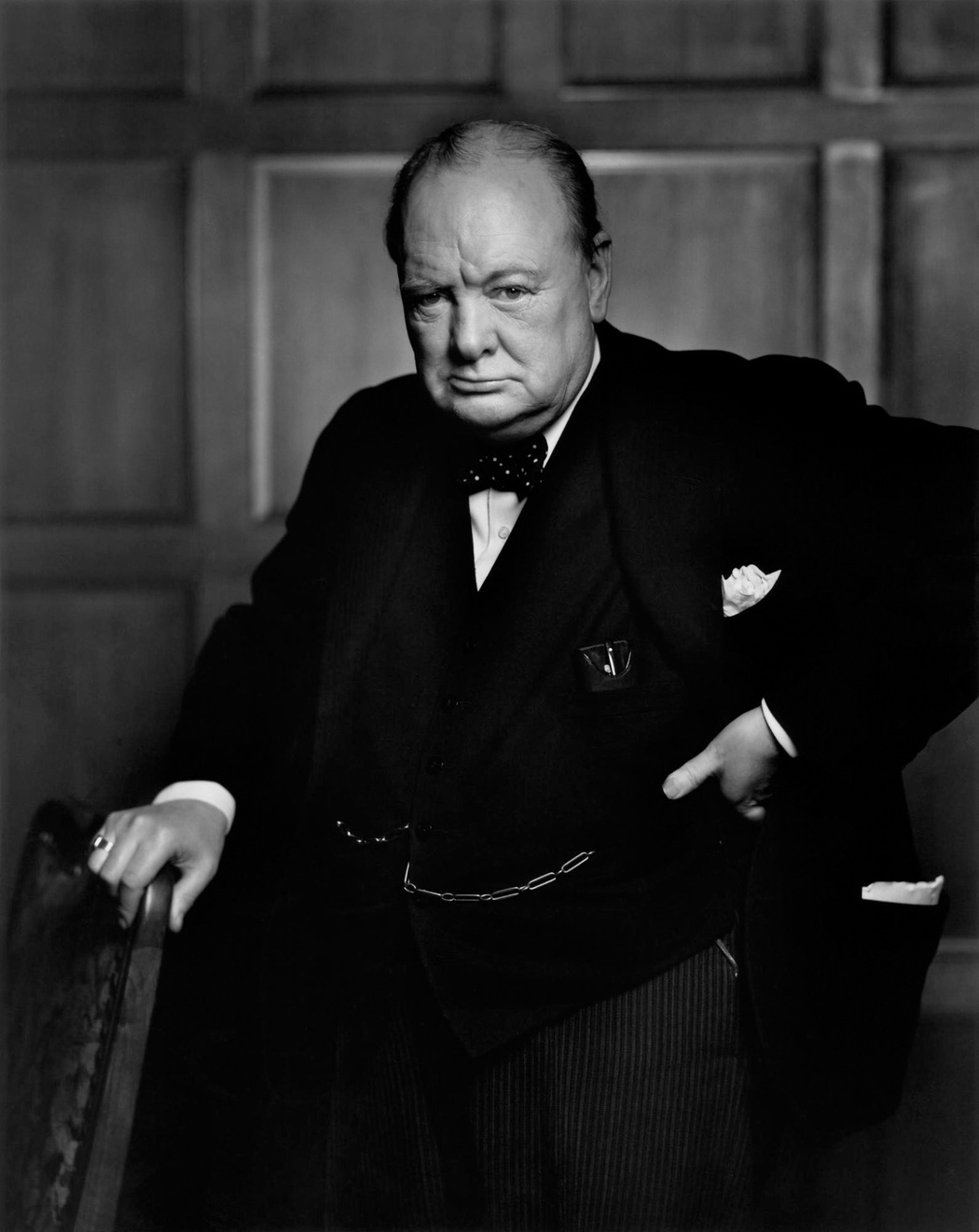
In photography’s near 200-year history a great variety of printing processes have been used to make prints, which can be broadly divided into two categories – traditional wet chemistry prints made in a darkroom using light-sensitive paper and chemical baths, and contemporary digital prints made by fine droplets of ink deposited onto the printing paper (no chemicals). The characteristics of each printing process give the prints a distinct ‘look and feel’ in terms of how sharply defined and detailed the image content is, the print’s tonal range, its texture and the longevity of the print.
In the traditional process, a darkroom is used to allow the processing of light-sensitive photographic materials, including glass plate negatives, film and photographic paper. The process is considered quite arduous, and darkroom prints are valued for their handmade quality. The photographer uses an enlarger, which is a special kind of projector used to shine light through a glass plate or film negative, and it transfers the image from the negative and enlarges it onto light-sensitive paper, in the form of a latent image. At this stage of the process the photographer has a lot of creative control with the enlarger, and can manipulate the aperture and focus, selectively lighten or darken areas, crop the image, and retouch the negative to remove any spots and blemishes.
The latent image which is produced by the effect of light on the sensitised printing paper is an invisible image, which is then rendered visible by submerging the print in a series of chemical baths to develop, stop and fix the image.
Digital photographs by comparison are manipulated on the computer, using software such as Adobe Photoshop, and typically printed using an inkjet printer, in which fine droplets of archival pigment ink are deposited directly onto a paper.
When acquiring a photographic print, it is worth spending the time to understand exactly what printing process was used to make the print, and also to investigate who made the print i.e. was it the original photographer themselves or their assistant, and when the print was made i.e. around the time the negative was made or at a later date. All of these considerations will affect the print’s value.
SILVER GELATIN PRINTS
The silver gelatin process was born in the 1870s, but it was in the 1910s that it became the most common method of printing black and white photographs. The technique has remained very much the same to the present day. A silver gelatin photograph may refer to one of two things: either the glass plate/film negative or the silver print made from this negative. The technique got its name from the fact that both the negative and the photographic paper contain silver halide crystals. Silver gelatin papers are made by coating an emulsion of light-sensitive silver salts in gelatin onto a sheet of paper. The sensitised paper is exposed to light through a negative and then developed out – that is, made visible in a chemical reducing solution. Silver prints are known for having a distinct luminous quality, and are characterised by deep blacks and subdued whites, organic texture and a timeless look. Because the silver image is suspended in a layer of gelatin emulsion that rests on a pigment-coated paper, silver gelatin prints can be sharply defined and highly detailed in comparison to platinum or palladium prints, in which the image is absorbed directly into the fibres of the paper. Most twentieth century black and white prints are silver gelatin prints and the printing process remains popular today because of its traditional aesthetic, and because the prints are stable. A variety of paper types are available to photographers, which can produce varying amounts of texture in the final print.

Paris, France 1989 (Umbrella Jump) by Elliott Erwitt (1928-2023)
Silver Gelatin Print 91.2 x 60.9cm
PLATINUM PRINTS
Platinum printing is a traditional wet chemistry process in which paper containing light sensitive iron salts and a platinum compound, rather than conventional silver salts, is exposed to light. Unlike the silver process, platinum lies on the paper surface, while silver lies in a gelatin that coats the paper. As a result, the final platinum image is absolutely matt with a deposit of platinum absorbed slightly into the paper. The process was invented in 1873 by William Willis, and platinum prints are valued both for their wide range of tones and permanence. The platinum group of metals are very stable against chemical reactions that might degrade the print, and platinum prints are widely regarded as the most durable of all the photographic printing processes. Because the prints are not coated with gelatin, they do not have a tendency to curl, and are characterised by a more gradual tonal range from black to white in comparison to a silver print. To the eye accustomed to the punch of a glossy silver gelatin print, a platinum print will often feel ‘softer’ or lower in contrast. But in reality, there are actually more steps between pure black and pure white in platinum prints than in a silver gelatin print. This contributes to the deeper, richer feeling you experience when looking at these prints. Notable American photographer Alfred Stieglitz (1864-1946) was an early adopter of the platinum print, he championed the printing process both for its aesthetic qualities (a wide range of tones which he regarded as unmatched) and reputation for permanence.
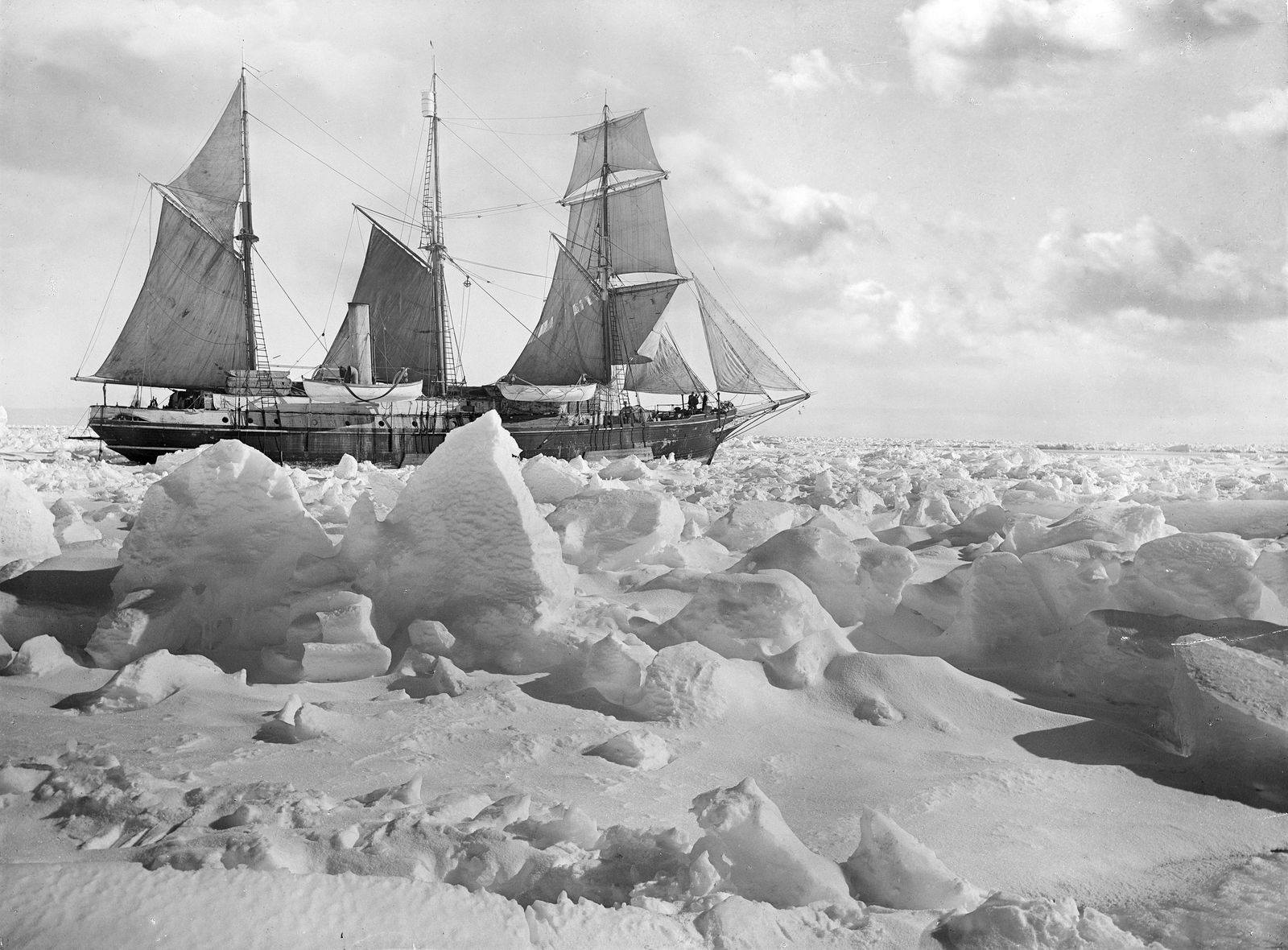
Endurance In Full Sail, In The Ice (Side View) 1914-17 by Frank Hurley (1885-1962)
Platinum Print 120 x 90cm
PALLADIUM PRINTS
A dramatic rise in the price of platinum after World War I led to a decline in the platinum printing process, and platinum prints became in part replaced by cheaper palladium prints, the process for which was almost the same, but where a compound of the less expensive metal palladium was used for sensitising the paper. In general, palladium prints are warmer, and more sepia in tone. Introduced in 1916, palladium paper was commercially made until the mid-1930s.
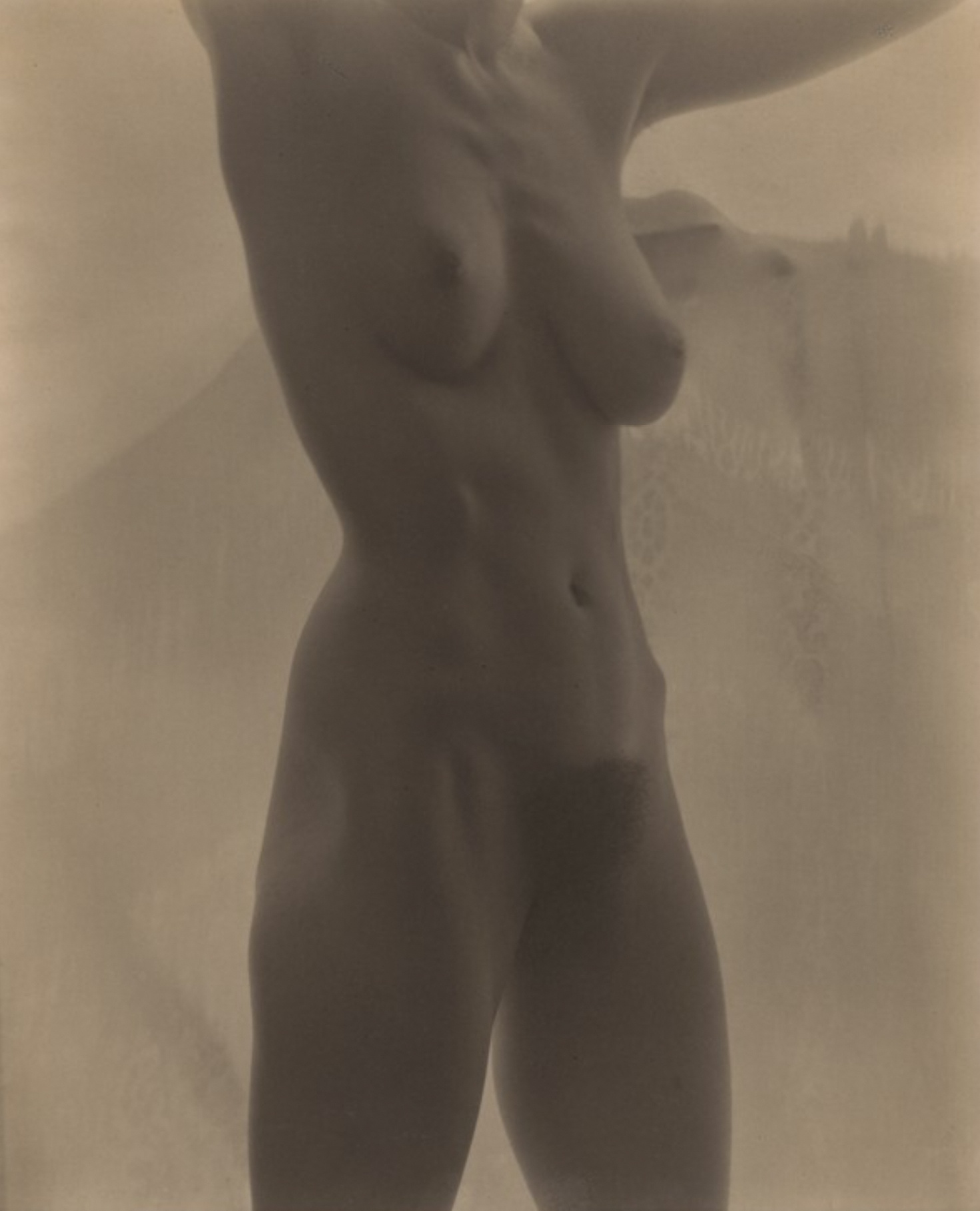
Georgia O' Keefe, Torso 1918 by Alfred Stieglitz (1864-1946)
Palladium Print 17.5 x 23.5cm
PHOTOGRAVURE PRINTS
Photogravure printing was invented in 1879 by Czech painter Karel Klíč, and peaked in popularity around 1900. The method produced very high-quality, stable prints using a combination of photographic and etching techniques, and was widely regarded as the most beautiful and luxurious means of printing the photographic image in ink. The process sought to solve two main problems that photographers were grappling with at the turn of the twentieth century. The first was the difficulty of producing multiple editions, the second was the problem of durability.
Photogravure prints typically looked smudged and velvety, which complimented the soft-focus techniques common to photographers of the era. The basic process was to photographically transfer an image to a polished copper plate, etch the image onto the plate, and then print from it using a press. Damp paper was pressed onto the etched copper plate, which had minute reservoirs of varying depths of ink. The deeper etched areas held more ink and transferred more ink onto the paper, creating the darker areas of the print. The image in ink was thus transferred from the plate to the paper by passing the paper between the rollers of a press, under heavy pressure. When viewed under magnification, the photogravure print is seen to be in three-dimensional relief, with a thicker layer of ink in the shadows and darker tones, and thinner layers in the lighter tones and highlights.
The process was capable of reliably reproducing the detailed, continuous rich tones of a photograph, and its strength lay in the fact that multiple numbers of prints could be made quicker, and for a fraction of the price of one platinum print.
Photogravures have a very sensual, almost velvety quality with warm blacks and a charming range of subtle shades of grey. It is quite easy to identify a photogravure print. Look at the print with a good magnifying glass and you will see a characteristic honeycomb appearance. This is caused by the grid used in the printing process. The image also appears soft, and the dark areas seem pitted.
In the early twentieth century Photogravure metal plate printing thus became an efficient way to produce multiple runs of prints for books. Alvin Langdon Coburn (1882-1966) was a master of the photogravure process, and the most important artist of the era to devote significant time to illustrating books with his photographs. You can read more about Coburn’s photogravure printing here. A number of notable early twentieth century photographers made photogravure prints which occasionally come up for sale.
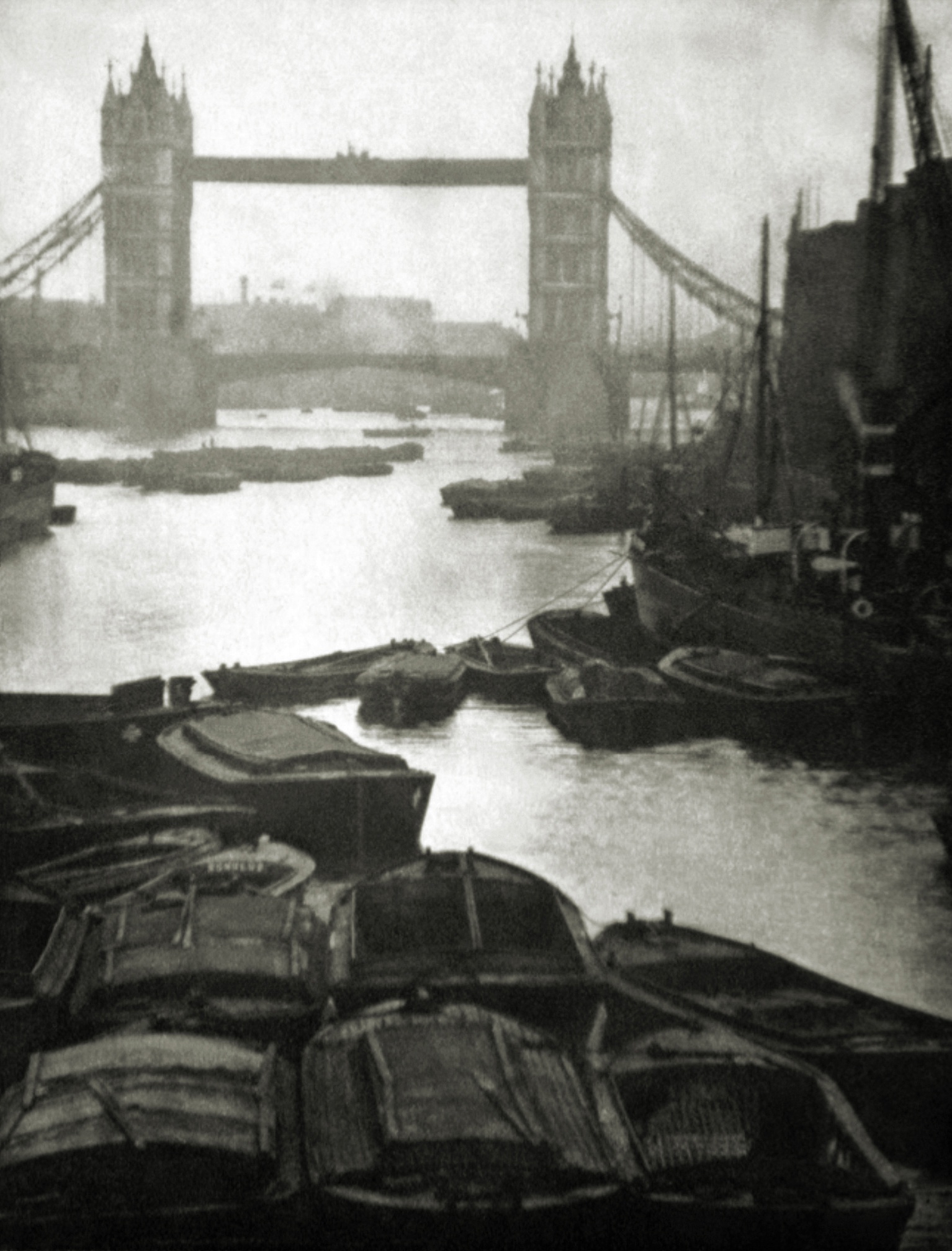
Tower Bridge And Barges, London 1906 by Alvin Langdon Coburn (1882-1966)
Photogravure Print 16.3 x 20cm
CHROMOGENIC OR C-TYPE PRINTS
Chromogenic or C-Type printing was the dominant method of colour printing since the process was invented in 1935. Originally, C-Type prints were made in a darkroom using traditional wet chemistry, and the colour negative was exposed to paper that contained 3 gelatin layers containing cyan, magenta and yellow dyes, which together created a full colour image. After the image had been exposed it was submerged in a chemical bath, where each layer reacted to the chemicals to create the full colour image. Because the chemicals are so complex, the image continues to react even after the process is completed. The chemicals are also extremely sensitive to water, light and heat, making it difficult to protect C-Type prints from deterioration. They can be prone to colour shift or fading without archival framing and minimal exposure to sunlight. The process was an early method for producing large scale prints. ‘C-Type’ was originally the trademark of Kodak, for the paper they used for making prints from colour negatives, and in 1942 the process gained popularity through Kodak’s ‘Kodacolor’ prints which were hailed for their ease, consistency, quality and affordability.
Today, C-Type prints are made digitally using LEDs or lasers to project an image onto sensitised paper and then developed using the same traditional wet process as above. They can also be produced as a hybrid of digital and darkroom processes, where digital images are projected onto paper using an enlarger, and then the wet chemistry process is performed by automated machinery.
 Elton John, Dodger Stadium, Los Angeles 1975 by Terry O'Neill (1938-2019)
Elton John, Dodger Stadium, Los Angeles 1975 by Terry O'Neill (1938-2019)
Digital C-Type Print 61 x 50.8cm
CIBACHROME / ILFOCHROME PRINTS
Cibachrome also known as Ilfochrome is a dye destruction process. The paper is unique in that dyes are incorporated into the emulsion on the paper instead of being formed chemically, and are selectively bleached away to form a full colour image. This produces very vivid colours, and it is regarded as one of the most stable printing processes. It was invented in 1933 by Bela Gaspar, a Hungarian chemist, but only first marketed in 1963. The paper used for this process has at least three emulsion layers and each layer is sensitised to a primary additive colour of light. The layers contain a dye related to that colour. During exposure to a colour transparency, each layer records different information about the colour makeup of the image, and in the development the unnecessary dyes are destroyed to form the image. The dyes reside in the emulsion layers, giving the print its characteristic colour saturation. The base is a polyester rather than fibre-based paper, which adds to the print’s longevity. In 2011, Cibachrome products were discontinued due to waning popularity and the ascendency of digital pigment printing.
 Princess Elizabeth, July 30, 1951 by Yousuf Karsh (1908-2002)
Princess Elizabeth, July 30, 1951 by Yousuf Karsh (1908-2002)
Cibachrome Print 28.2 x 33.6cm
PIGMENT PRINTS
Pigment prints in photography, also known as Giclée prints, are created using professional inkjet printers (the paper is supplied as flat sheets or on large rolls) and pigment ink. These printers mix pigment-based inks to create specific hues and use very fine nozzles to spray the ink onto the paper in precise detail. The pigment inks gain their hue from powdered substances suspended in liquid. Modern archival pigment inks contain a stable dye which has been tested and can withstand light without fading for over 100 years. A wide variety of papers are available, which contemporary photographers choose to suit the aesthetic of their work, often replicating characteristics of earlier printing techniques. Pigment prints are known for a wide range of tones, and sharply defined image detail. Pigment prints are often large as modern papers are now available in large format rolls up to 60 inches.
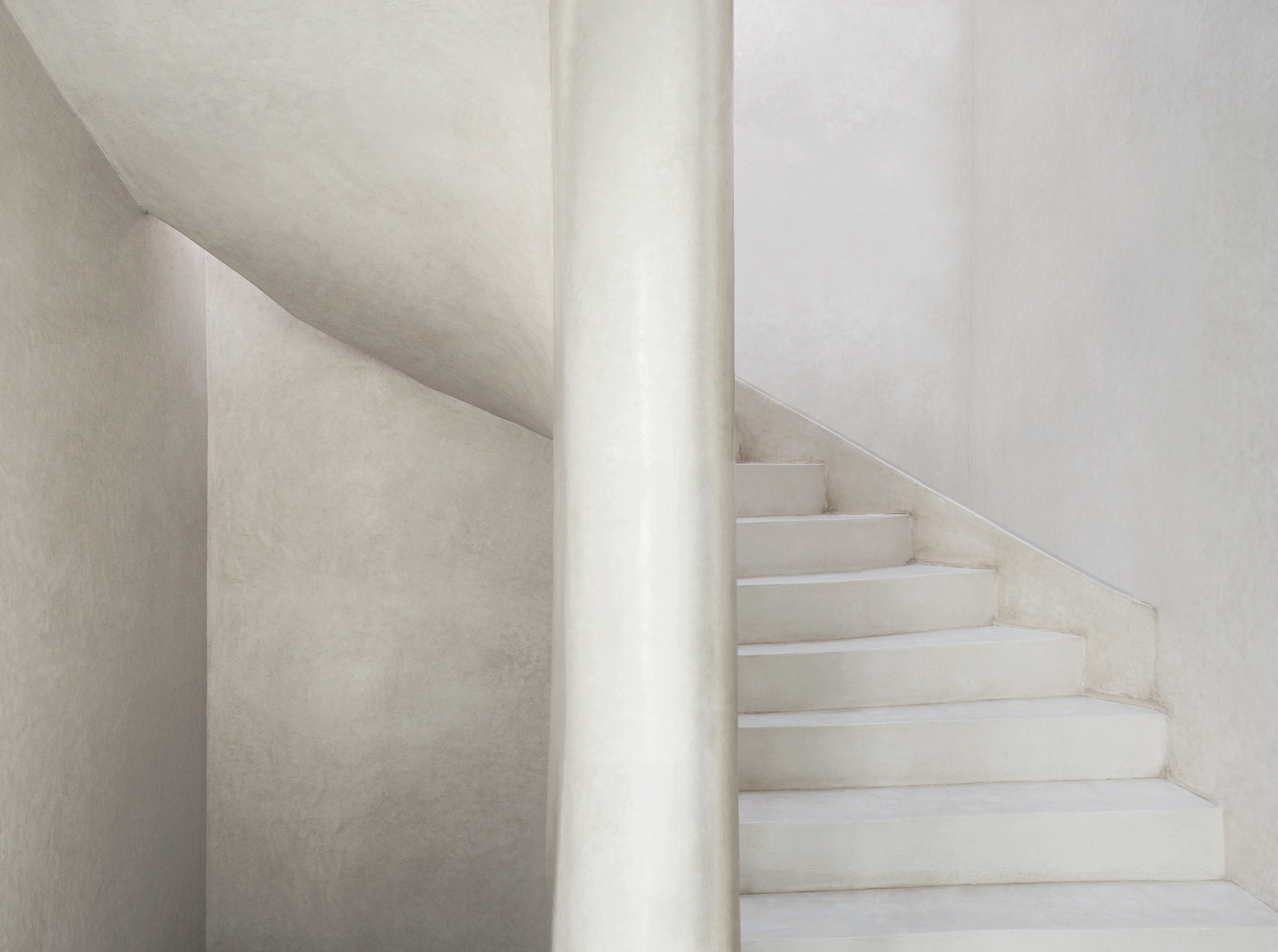
Marrakesh, Morocco 2014 by Charlie Waite (b.1949)
Archival Pigment Print 80 x 60cm